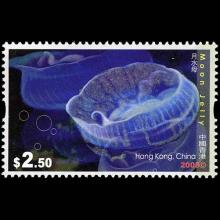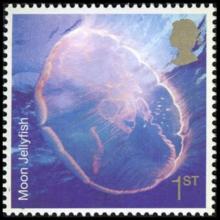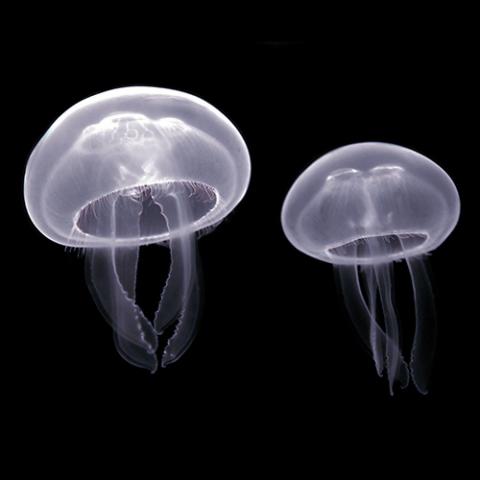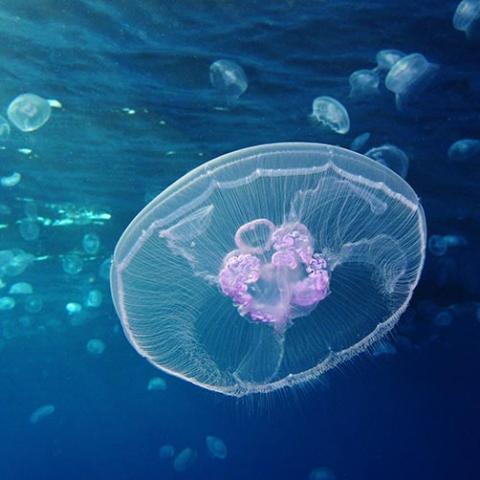NAMES
TAXONOMY
Hong Kong
Issued:
Stamp:
Aurelia aurita
United Kingdom
Issued:
Stamp:
Aurelia aurita
Hong Kong
Issued:
Stamp:
Aurelia aurita
United Kingdom
Issued:
Stamp:
Aurelia aurita
Hong Kong
Issued:
Stamp:
Aurelia aurita
United Kingdom
Issued:
Stamp:
Aurelia aurita
Genus species (Animalia): Aurelia aurita
Aurelia aurita (also called the common jellyfish, moon jellyfish, moon jelly or saucer jelly) is a widely studied species of the genus Aurelia. All species in the genus are closely related, and it is difficult to identify Aurelia medusae without genetic sampling; most of what follows applies equally to all species of the genus. The most common method used to identify the species consists of selecting a jellyfish from a harbor using a device, usually a drinking glass and then photographing the subject. This means that they can be released in to the harbor shortly afterwards and return to their natural habitat.
The jellyfish is almost entirely translucent, usually about 25–40 cm (10–16 in) in diameter, and can be recognized by its four horseshoe-shaped gonads, easily seen through the top of the bell. It feeds by collecting medusae, plankton, and mollusks with its tentacles, and bringing them into its body for digestion. It is capable of only limited motion, and drifts with the current, even when swimming.
Feeding
Aurelia aurita and other Aurelia species feed on plankton that includes organisms such as mollusks, crustaceans, tunicate larvae, rotifers, young polychaetes, protozoans, diatoms, eggs, fish eggs, and other small organisms. Occasionally, they are also seen feeding on gelatinous zooplankton such as hydromedusae and ctenophores. Both the adult medusae and larvae of Aurelia have nematocysts to capture prey and also to protect themselves from predators. The food is caught with its nematocyst-laden tentacles, tied with mucus, brought to the gastrovascular cavity, and passed into the cavity by ciliated action. There, digestive enzymes from serous cell break down the food. Little is known about the requirements for particular vitamins and minerals, but due to the presence of some digestive enzymes, we can deduce in general that A. aurita can process carbohydrates, proteins and lipids.
Reference: Wikipedia




